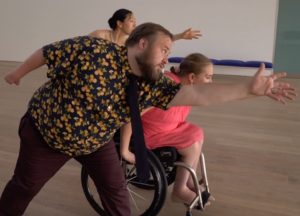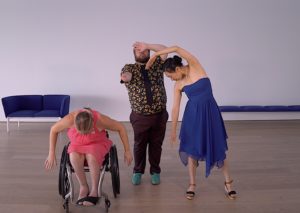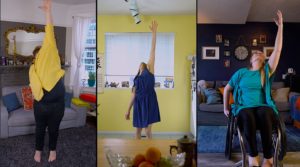Life Moves: Finding Ho.Me - Vancouver Ballet Society
- Home
- Life Moves
- Life Moves: Finding Ho.Me

By Carolina Bergonzoni
In 2017, I arrived at the Vancouver International Airport after a visit to my family in Italy. It was the first time I had travelled out of Canada since becoming a permanent resident, and a Canadian Customs officer greeted me with a warm, “Welcome home!” I remember my confusion: I had just left my home in Bologna, where I was born and raised, and yet I was also coming home?
As an artist, this created many lines of inquiry: the notions of finding home, coming home and being home. This is when Ho.Me, a short contemporary dance piece that I first choreographed for the stage and then adapted into a film, was born.

The title plays on the Italian phrase “ho me,” which can be roughly translated as “I own, or have, myself.” With this word play came themes of comfort and discomfort in relation to the notion of inhabiting the body.
The creative process was rooted in an “aesthetic of access,” meaning that accessibility was considered as the starting point rather than as an afterthought. This approach, like the dance piece itself, embraces difference as the norm, rather than the outlier, and is an important part of my artistic practice. The dancers — Mathew Chyzyk, Harmanie Rose and Peggy Leung — and I have worked together through All Bodies Dance Project for a number of years, and we have learned strategies to collaborate and create movement for and from our very different bodies.
On the first day of rehearsal, I asked each dancer to generate a short movement phrase from a writing prompt: “I come from….” This was a practice I initially developed in my solo work, having played with the relationship between dance, dance making and writing over the last five years. This process allows the dancers to generate movement from within, offering truthful personal insights into their relationship to their bodies and about their sense of belonging.
A year after Ho.Me premiered in 2018, I adapted it into a film with the aid of Gemma Crowe (videographer and editor), Alex Mah (composer) and danielle wensley (audio description for blind and partially sighted audiences). The film was an opportunity to reveal the dancers in their actual homes, surrounded by their belongings (a clock, a couch, a photo, a wok). These objects allow viewers to discover something more about who the dancers are.

As a first-time director, deciding where to position the camera, how to move it and how to frame each soloist gave me another opportunity to be in a state of creative discovery, exploring these different tools and methods. Which gesture told the story best, shot from what angle and with what movement? How did moving the camera closer or farther change the meaning or shape of the dance? How could we connect these ideas and these spaces in a way unique to the medium? In the editing stages, how could the ability to select different takes and piece together different images affect their meaning?
The camera gave me the opportunity to gently guide the audience’s focus. For instance, the close-up on Harmanie’s fingers on the spikes of the back wheel of her wheelchair, and the folding of her body followed by the camera moving from her head to her toes. Shooting in Peggy’s kitchen, her dance is framed by both the camera and the small apartment itself. In Mathew’s solo, the camera circles around his body, generating an increase of speed and a sort of double-circling that is only possible with the added medium of film.
Later, in an expansive lobby where the performers are now dressed in formal clothing, they become an ensemble. They are becoming together, in scenes intended to build a connection between them that speaks to togetherness and community.
To reflect on the making Ho.Me during these times of self-isolation offers an opportunity to rediscover the intimacy of our own homes. I invite you to focus on one object of the room you are presently in. What is that object’s story? Take a moment to recollect memories around it: Where and when did you acquire it? How does that object make you feel today, at this very moment? Now, let these memories move through your body. What emotion does the object bring back to you? How can your body express these feelings through movement? Perhaps the result is a happy jump or maybe a contraction of your spine. The possibilities are endless.

